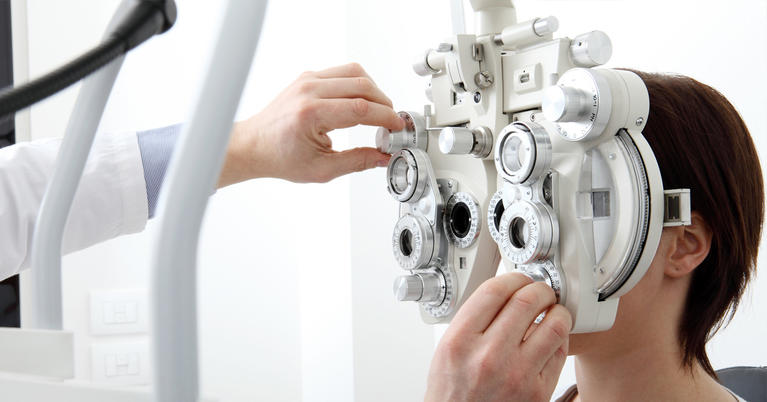The Benefits And Drawbacks of Various Refractive Surgical Procedures for Boosted Eyecare

LASIK Surgical Procedure
LASIK surgical procedure is a commonly carried out refractive treatment that intends to correct vision problems such as astigmatism, farsightedness, and nearsightedness. Throughout the treatment, a thin flap is produced on the cornea, and a laser is utilized to reshape the underlying cells, dealing with the refractive error.
One of the main advantages of LASIK surgical treatment is the fast enhancement in vision experienced by lots of patients. It is essential for people thinking about LASIK surgical treatment to go through a comprehensive examination by an eye treatment professional to identify if they are suitable candidates for the procedure.
PRK Treatment
The PRK procedure, also referred to as Photorefractive Keratectomy, is a type of refractive surgery that intends to correct vision problems similar to LASIK surgery. Unlike LASIK, which includes creating a flap in the cornea, PRK deals with the surface layer of the cornea. Throughout the PRK treatment, the outer layer of the cornea, called the epithelium, is removed to permit reshaping of the underlying corneal cells with an excimer laser. This improving helps to correct refractive mistakes such as farsightedness, nearsightedness, and astigmatism.
One of the benefits of PRK over LASIK is that it eliminates the danger of flap-related problems because no flap is developed throughout the surgical procedure. In spite of the longer recovery period, PRK can be a suitable alternative for people seeking vision improvement surgical treatment.
SMILE Surgical Treatment
An advanced refractive surgical procedure technique acquiring appeal in the field of ophthalmology is SMILE Surgical procedure. Small Laceration Lenticule Removal (SMILE) is a minimally invasive procedure that remedies vision by reshaping the cornea making use of a femtosecond laser. Unlike standard LASIK surgical treatment, SMILE Surgical procedure involves creating a little laceration in the cornea to remove a lenticule, which results in less disruption to the corneal structure and possibly much faster recovery times.
One of the primary benefits of SMILE Surgical procedure is its capability to treat myopia (nearsightedness) and astigmatism with high precision, bring about exceptional aesthetic results for patients. The minimally invasive nature of the treatment also minimizes the danger of problems such as completely dry eye syndrome, making it a favorable option for people looking for refractive surgery.

LASEK Technique
Having actually checked out the advantages and considerations of SMILE Surgery, an additional noteworthy refractive surgery strategy worth analyzing is the LASEK Technique. LASEK, which means Laser-Assisted Subepithelial Keratectomy, is a form of laser eye surgical treatment that aims to remedy refractive mistakes such as myopia (nearsightedness), hyperopia (farsightedness), and astigmatism.
Unlike LASIK, LASEK does not entail developing a corneal flap. Instead, during a LASEK treatment, the specialist utilizes a diluted alcohol remedy to loosen the slim external layer of the cornea, understood as the epithelium.
One of the main benefits of LASEK is that it can be suitable for individuals moved here with thin corneas who may not be excellent prospects for LASIK. In addition, LASEK typically leads to minimal post-operative discomfort and a quicker recovery time contrasted to PRK. Nevertheless, the aesthetic healing process with LASEK may be somewhat longer than with LASIK.
Implantable Call Lenses
Implantable Call Lenses provide a long-lasting vision improvement solution for people seeking an option to conventional contact lenses or glasses. These lenses, additionally recognized as phakic intraocular lenses, are surgically inserted into the eye to deal with refractive mistakes such as myopia (nearsightedness), hyperopia (farsightedness), and astigmatism. eye doctors in andalusia. Unlike standard call lenses that rest on the surface of the eye, implantable get in touch with lenses function within the eye itself, supplying clear vision without the need for day-to-day maintenance or removal
One of the key advantages of implantable call lenses is their durability. Once put, they can continue to be in the eye indefinitely, providing stable and constant vision improvement. Furthermore, these lenses can be a superb alternative for people that are not great candidates for laser eye surgery or that favor a reversible vision correction procedure.
Nevertheless, implantable get in touch with lenses do carry some threats, consisting of the potential for cataracts or raised eye pressure. It is crucial for people considering this choice to speak with an eye care specialist to determine if implantable call lenses are the ideal selection for their details needs and eye wellness.
Final Thought
In final thought, each type of refractive surgery has its own advantages and drawbacks. LASIK surgical procedure is popular for its fast recuperation time, while PRK treatment might be appropriate for patients with slim corneas.

Generally, SMILE Surgery presents an encouraging alternative for individuals looking to improve their vision via refractive surgical procedure.